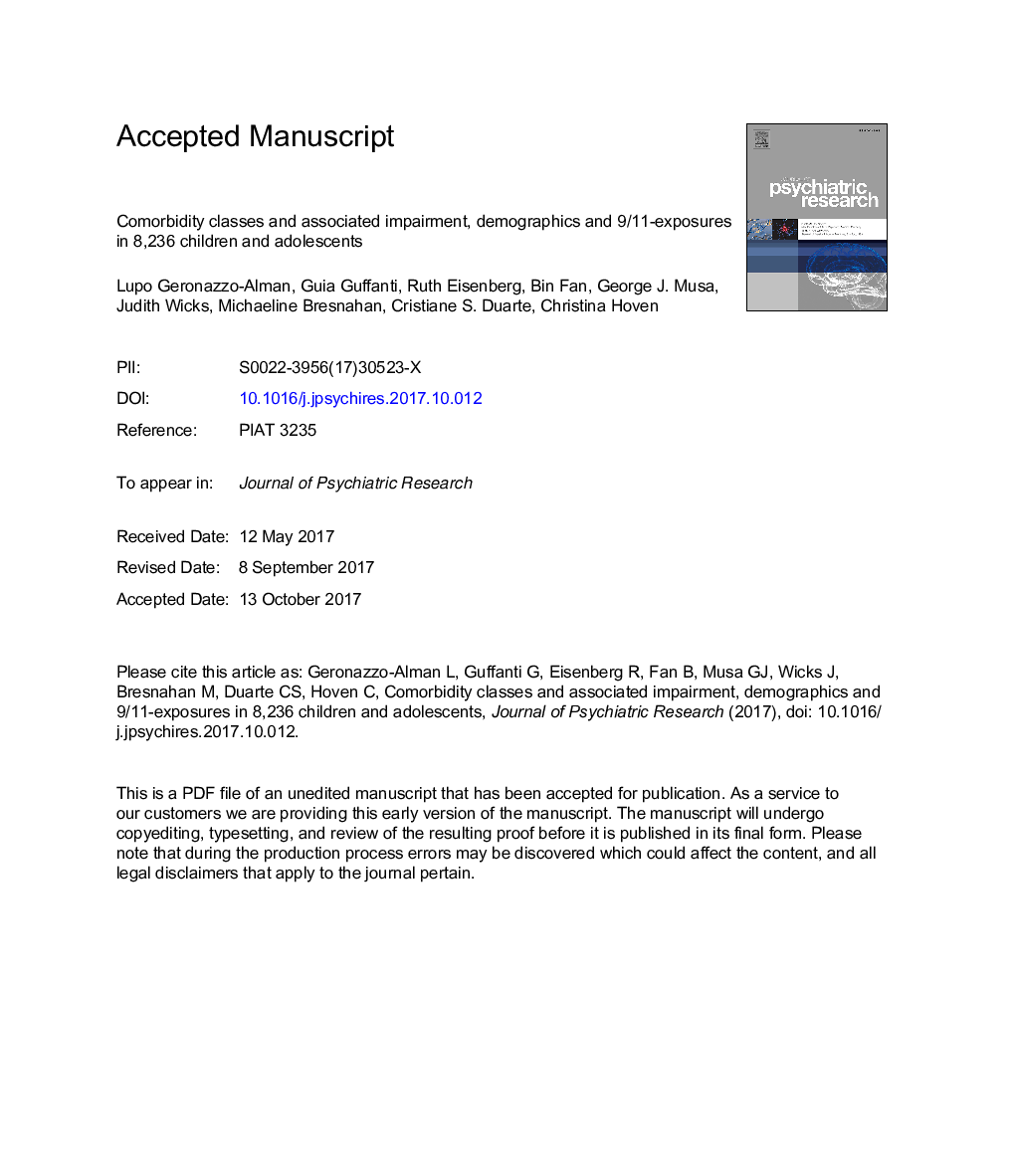| کد مقاله | کد نشریه | سال انتشار | مقاله انگلیسی | نسخه تمام متن |
|---|---|---|---|---|
| 6799741 | 1433297 | 2018 | 30 صفحه PDF | دانلود رایگان |
عنوان انگلیسی مقاله ISI
Comorbidity classes and associated impairment, demographics and 9/11-exposures in 8,236 children and adolescents
ترجمه فارسی عنوان
کلاس های همبستگی و اختلالات مرتبط با آن، جمعیت شناسی و افسردگی 9/11 در 8236 کودک و نوجوان
دانلود مقاله + سفارش ترجمه
دانلود مقاله ISI انگلیسی
رایگان برای ایرانیان
کلمات کلیدی
همبودی، وجود همزمان دو بیماری، روانپزشکی توسعه فاجعه، اختلال رفتاری، اختلالات عاطفی،
موضوعات مرتبط
علوم زیستی و بیوفناوری
علم عصب شناسی
روانپزشکی بیولوژیکی
چکیده انگلیسی
The extensive comorbidity of psychiatric disorders in children and adolescents leads to clinical heterogeneity, and is an often-overlooked issue in etiopathogenic and treatment studies in developmental psychopathology. In a representative sample (N=8236) of New York City public school students assessed six months after 9/11, latent class analysis was applied to 48 symptoms across seven disorders: posttraumatic stress, agoraphobia, separation anxiety, panic disorder, generalized anxiety (GAD), major depression (MDD) and conduct disorder (CD). Our objective was to identify classes defined by homogenous symptom profiles, and to examine the association between class membership and gender, age, race, different types of exposure to 9/11, and impairment. Eight homogenous comorbidity patterns were identified, including four severe disturbance classes: a multimorbid internalizing class (INT), a class with a high probability of CD, MDD, and GAD symptoms (Distress/EXT), a non-comorbid externalizing class, and a non-comorbid MDD class. Demographic and 9/11-related exposures showed some degree of specificity in their association with severe symptom profiles. Impairment was particularly high in the INT and Distress/EXT classes. A better characterization of phenomic data, that takes comorbidity into account, is essential to understand etiopathogenic processes, and to move psychiatric research forward towards personalized medicine. The high probability of endorsing symptoms of multiple disorders in the INT and Distress/EXT classes supports the use of treatments focusing on multimorbidity. Clinical trials should evaluate the effectiveness of disorder-specific versus transdiagnostic interventions. The association between class membership and demographic and exposure variables suggests that interventions may be improved by considering specific predictors of class membership.
ناشر
Database: Elsevier - ScienceDirect (ساینس دایرکت)
Journal: Journal of Psychiatric Research - Volume 96, January 2018, Pages 171-177
Journal: Journal of Psychiatric Research - Volume 96, January 2018, Pages 171-177
نویسندگان
Lupo Geronazzo-Alman, Guia Guffanti, Ruth Eisenberg, Bin Fan, George J. Musa, Judith Wicks, Michaeline Bresnahan, Cristiane S. Duarte, Christina Hoven,
